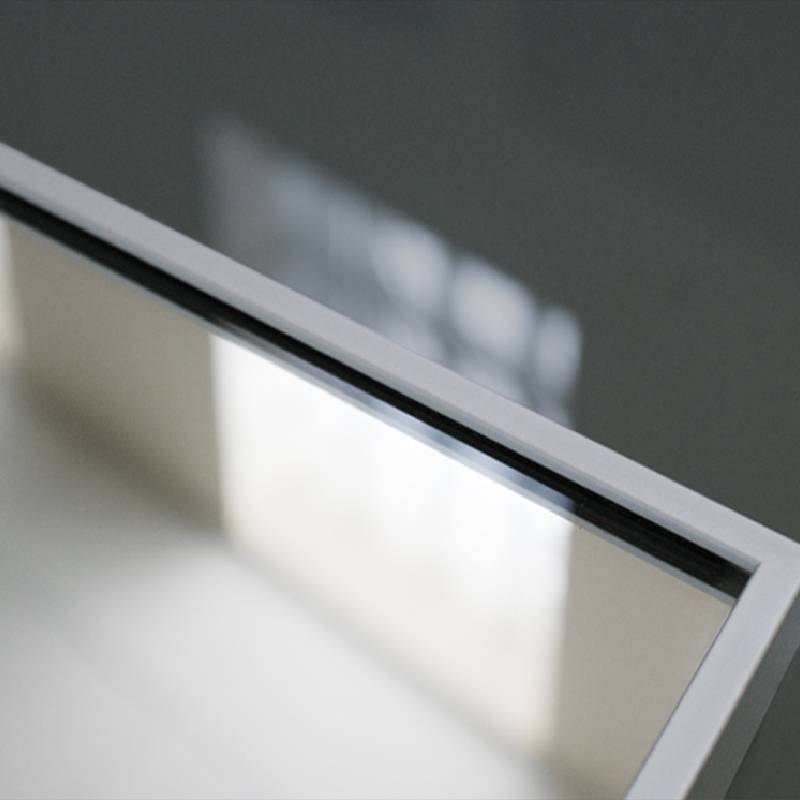Energy Efficient Low-E Glass A Sustainable Solution for Modern Architecture
In the pursuit of sustainable architecture, energy-efficient low-e glass has emerged as a revolutionary material that offers significant benefits in reducing energy consumption and enhancing comfort within buildings. This innovative glass technology is designed to minimize heat transfer through windows, making it an essential component for achieving energy efficiency in modern construction.
Low-e glass, short for low emissivity glass, is coated with a thin layer of metal or metal oxide that reflects infrared light while allowing visible light to pass through. This unique property enables the glass to reflect interior heat back into the building during cold months and reflect exterior heat away from the building during warm months. As a result, low-e glass helps maintain a comfortable indoor temperature without relying heavily on heating and cooling systems, leading to substantial energy savings.
The energy efficiency of low-e glass is further enhanced when combined with other advanced features such as double or triple glazing, argon gas fills, and thermal breaks within the window frame. These elements work together to create a highly insulated window system that significantly reduces heat loss and gain, ultimately lowering energy bills and decreasing the carbon footprint of buildings.
Moreover, low-e glass provides additional advantages beyond energy efficiency. Its ability to filter out harmful ultraviolet (UV) rays protects interior furnishings from fading and extends their lifespan Its ability to filter out harmful ultraviolet (UV) rays protects interior furnishings from fading and extends their lifespan

Its ability to filter out harmful ultraviolet (UV) rays protects interior furnishings from fading and extends their lifespan Its ability to filter out harmful ultraviolet (UV) rays protects interior furnishings from fading and extends their lifespan
 energy efficient low e glass
energy efficient low e glass. The reduced need for air conditioning also means less noise pollution and improved indoor air quality since windows are not opened frequently to cool down spaces.
The use of energy-efficient low-e glass is not only beneficial for residential buildings but also holds immense potential for commercial structures such as offices, hotels, and shopping centers. By adopting this technology, businesses can reduce their operating costs associated with heating and cooling while creating more pleasant environments for customers and employees alike.
In conclusion, energy-efficient low-e glass represents a critical step forward in the quest for sustainable architecture. Its ability to save energy, enhance comfort, and protect against UV damage makes it an invaluable asset in modern construction projects. As we continue to face challenges related to climate change and resource conservation, investing in energy-efficient materials like low-e glass will undoubtedly play a crucial role in shaping a more sustainable future for our built environment.


 Its ability to filter out harmful ultraviolet (UV) rays protects interior furnishings from fading and extends their lifespan Its ability to filter out harmful ultraviolet (UV) rays protects interior furnishings from fading and extends their lifespan
Its ability to filter out harmful ultraviolet (UV) rays protects interior furnishings from fading and extends their lifespan Its ability to filter out harmful ultraviolet (UV) rays protects interior furnishings from fading and extends their lifespan energy efficient low e glass. The reduced need for air conditioning also means less noise pollution and improved indoor air quality since windows are not opened frequently to cool down spaces.
The use of energy-efficient low-e glass is not only beneficial for residential buildings but also holds immense potential for commercial structures such as offices, hotels, and shopping centers. By adopting this technology, businesses can reduce their operating costs associated with heating and cooling while creating more pleasant environments for customers and employees alike.
In conclusion, energy-efficient low-e glass represents a critical step forward in the quest for sustainable architecture. Its ability to save energy, enhance comfort, and protect against UV damage makes it an invaluable asset in modern construction projects. As we continue to face challenges related to climate change and resource conservation, investing in energy-efficient materials like low-e glass will undoubtedly play a crucial role in shaping a more sustainable future for our built environment.
energy efficient low e glass. The reduced need for air conditioning also means less noise pollution and improved indoor air quality since windows are not opened frequently to cool down spaces.
The use of energy-efficient low-e glass is not only beneficial for residential buildings but also holds immense potential for commercial structures such as offices, hotels, and shopping centers. By adopting this technology, businesses can reduce their operating costs associated with heating and cooling while creating more pleasant environments for customers and employees alike.
In conclusion, energy-efficient low-e glass represents a critical step forward in the quest for sustainable architecture. Its ability to save energy, enhance comfort, and protect against UV damage makes it an invaluable asset in modern construction projects. As we continue to face challenges related to climate change and resource conservation, investing in energy-efficient materials like low-e glass will undoubtedly play a crucial role in shaping a more sustainable future for our built environment.